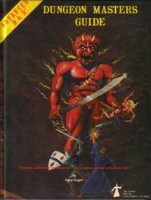Duodecimus said: . . . My last campaign ending streak was 20, 20, 20, 19, 20. I've played for 2700ish hours. lets assume I roll five times every minute and discount any time I may have spent prepping. I have thus rolled ~800,000 times. In the situation, it wouldn't have actually mattered if it was 19 or 20, so lets open it up and call it 1/10. That streak had a ~1 in 100,000 chance in happening, and thus is totally believeable that it would happen. 8 whole times, in fact. . . . This is why so many people think that there are problems with random generators; probability is hard. 1 in 100,000 is the odds of getting that one specific (19 or 20 five times in a row) streak. If you expand that 'memorable' streaks and include 1 or 2 five times in a row that goes up to 1 in 50,000. If you expand that to 'any set of two numbers that are only 1 point apart' the odds rise to 19 in 100,000 or almost 1 in 5,000. The real thing, however, is this; the 1 in 100,000 chance is based on a somewhat arbitrary rule that is designed to fit the conditions while giving a very low probability that it actually happened. We had four rolls out of five that were 20's. Normally the odds of that are around 1 in 33,684, and that's because we are only considering 20's. The odds of rolling four of the same nonspecific number is about 1 in 1,684. However, since these were 20's we get to kick it up to the lower probability of 1 in 33,684. Then because the non-20 was really, really close to the 20 we modify the rule a little bit more to come up with our 1 in 100,000 rule. In short, what's done is that people look at rolls and then retroactively apply a rules set that is 'aesthetically pleasing' but which produces the lowest probability possible. It really is nothing more than our pattern recognition spotting patterns that aren't really there (or that are just occurring through happenstance if you want to argue that yes, that specific roll constitutes a pattern) the same way we see shapes in clouds.
















